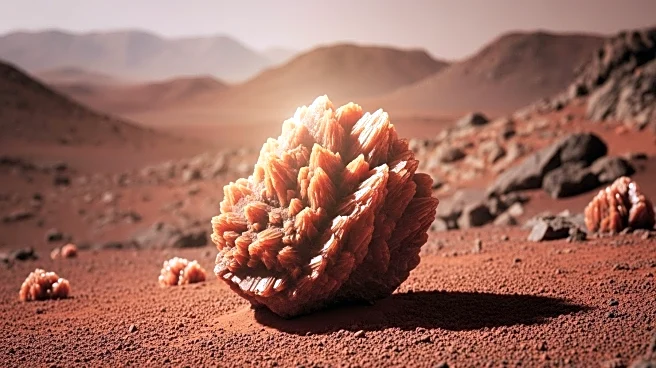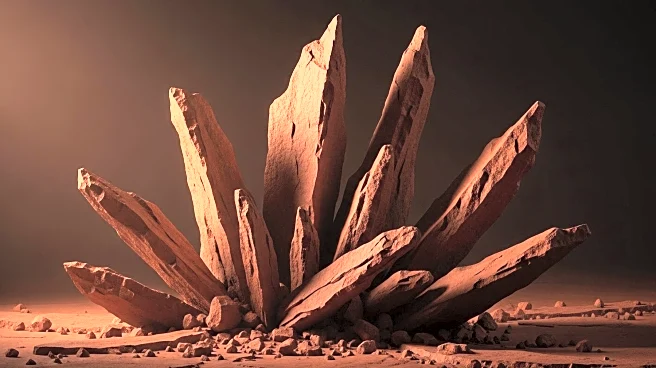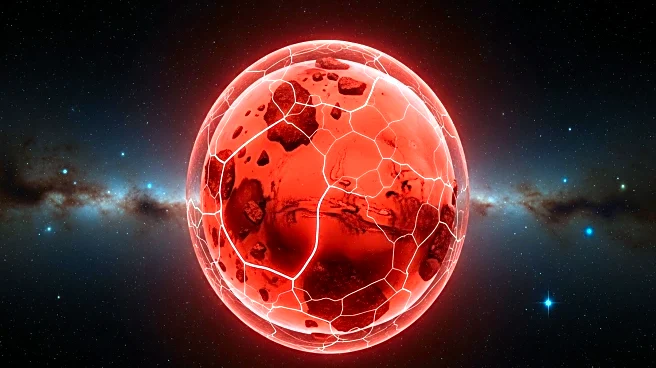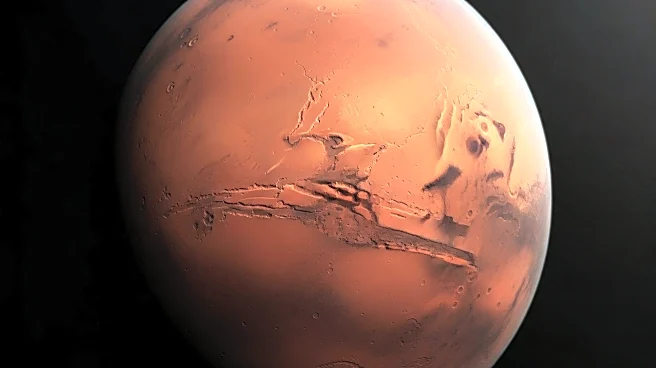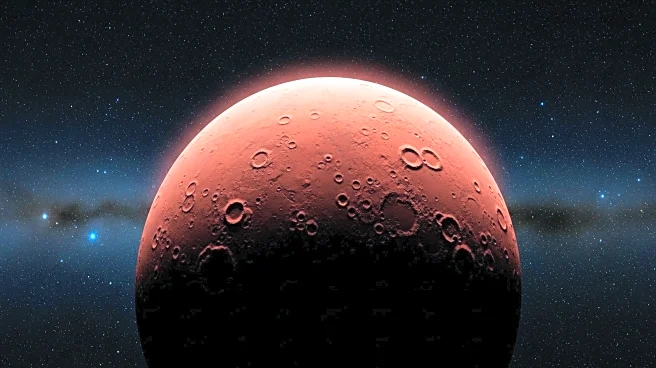What's Happening?
Scientists from the SETI Institute have discovered a new mineral on Mars, ferric hydroxysulfate, using data from the Mars Orbiter. This mineral, identified through spectroscopy, suggests a watery and chemically active past on the planet. The discovery was made by analyzing light reflecting off Mars' surface, revealing a mineral never before seen on the Red Planet. The presence of ferric hydroxysulfate, which forms in the presence of water, iron, and sulfur, indicates that Mars once had conditions similar to early Earth, potentially capable of sustaining life.
Why It's Important?
The discovery of ferric hydroxysulfate on Mars is significant as it provides evidence of a potentially habitable environment in the planet's past. This finding could reshape our understanding of Mars' history and its capacity to support life. The mineral's formation conditions suggest volcanic and geothermal activity, pointing to a more dynamic and Earth-like environment than previously thought. This discovery could influence future Mars exploration priorities, focusing on regions like Juventae Chasma and Aram Chaos for further study.
What's Next?
The discovery may lead to increased interest in Mars exploration, particularly in areas where the mineral was found. Scientists may prioritize these regions for in-depth surface exploration to better understand Mars' environmental history and its potential to support life. The findings could also impact future missions aimed at searching for signs of life or planning human habitation on Mars.
Beyond the Headlines
The discovery of ferric hydroxysulfate highlights the importance of continued space exploration and research. It underscores the potential for Mars to have been more Earth-like in its past, which could have implications for understanding planetary evolution and the conditions necessary for life. This research contributes to the broader quest to determine whether life ever existed on Mars and what the planet's future holds.


